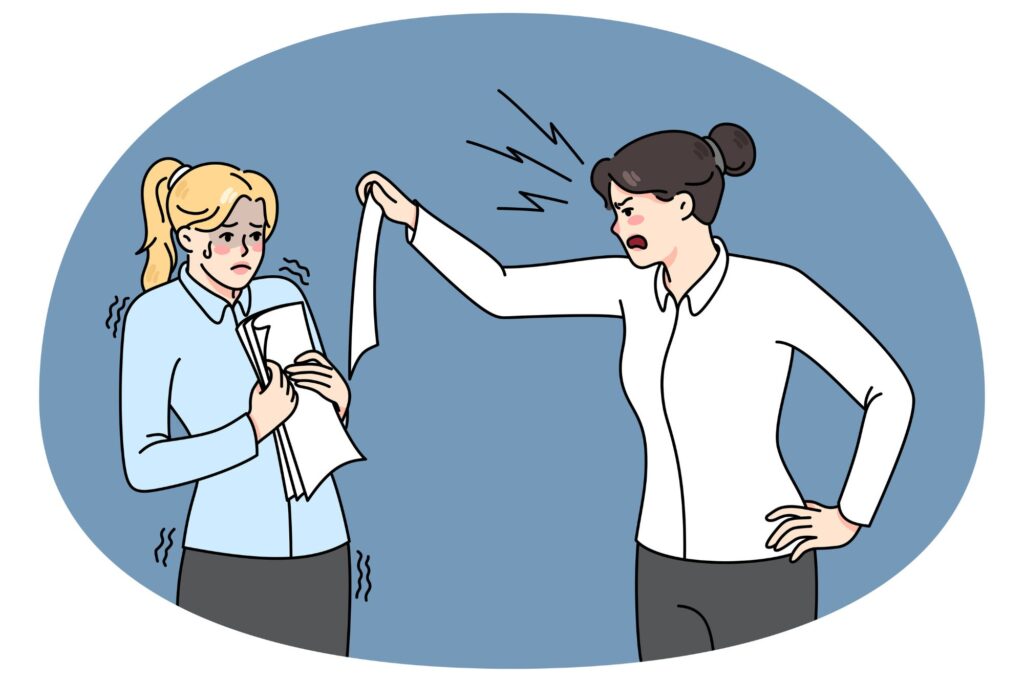We as a society need to have a serious talk about “Will Power” and its non-existence. The concept of Will Power is not only a social construct that researchers have debunked as a human character trait or learnable skill, but is corrosive to our work and family relationships.
The concept of willpower has long held a place in our cultural understanding as the force that enables us to overcome temptation, make difficult decisions, and achieve our goals. Yet, modern psychological research suggests that the notion of willpower might not be as straightforward as it seems.
Impulse Control vs. “Willpower”
A brief clarification is in order. When I use the word “willpower”, I refer to a generalized expectation that: if my people possess the skill or quality known as “willpower”, they will put their mind to their tasks and achieve the goals I’ve set out for them, and not let routine distractions stand in their way. This might be a sales team that needs to hit a certain revenue goal for the month, or it might be a legal team that has boxes and boxes of discovery to analyze before a quickly approaching court date. In this limited paradigm that we often find ourselves in by default, if they don’t succeed, it means they didn’t have the motivation or “willpower”.
The skill of Impulse Control on the other hand is a real skill (or even habit) that one can develop, but it describes in-the-moment decisions on what you’ll do with your, for lack of a better word, impulses.
The difference is this: If you are trying to eat healthier, you may exercise impulse control at the store to not purchase that pint of ice cream as a miniature “system” that ensures you won’t have a weak moment late at night when your powers of impulse control are weaker. That’s a learnable skill. As in our examples above, hitting a sales goal or reading through an impossible amount of documents in a limited amount of time are not learnable skills or personality attributes.
The Illusory Existence of Willpower
Willpower, often defined as the ability to resist short-term temptations for the sake of long-term goals, has been the cornerstone of many self-help strategies. However, research suggests that impulse control and other productive skills/habits we’ve developed over time are not an unlimited resource that can be easily tapped into. In fact, the more we rely solely on what we sometimes call “willpower”, the more we set ourselves up for failure. This phenomenon is known as “ego depletion,” where our self-control abilities become fatigued after repeated exertion.

Quick, Don’t Think of a White Bear
Daniel Wegner’s “Suppressing the White Bear” experiment provides a vivid illustration of the limitations of willpower. In this experiment, participants were asked to avoid thinking about a white bear. Paradoxically, those who were instructed to forcefully suppress thoughts of the white bear found themselves thinking about it even more. This phenomenon, known as the “ironic rebound,” reveals that the more we forcefully resist a temptation, the more it tends to dominate our thoughts.
Willpower (or self control) Is Not a Personality Trait Either
In the famous Stanford Marshmallow Experiment, conducted by Walter Mischel in the 1960s, demonstrated that self-control and willpower are not fixed traits. In this study, children were given the choice between eating one marshmallow immediately or waiting for a while to receive two marshmallows. The ability to delay gratification varied widely among the children, suggesting that willpower is not something universally possessed or easily manipulated.
Moreover, studies by psychologists Roy F. Baumeister and Angela L. Duckworth have shown that willpower is influenced by various factors, including stress, fatigue, and the availability of tempting distractions. It’s not a magical force that can overcome any obstacle but a complex interplay of psychological, emotional, and environmental factors.
The Consequences of Believing in “Willpower”
Now that we’ve debunked the myth of willpower, let’s examine the negative consequences of clinging to this concept in leadership and business.
- Unrealistic Expectations: When leaders believe in the myth of willpower, they may set unrealistic expectations for their employees. They assume that individuals can simply summon the willpower to overcome any obstacle, regardless of the circumstances. This places undue pressure on employees, leading to stress and burnout.
- Blame Culture: Believing in willpower often results in a culture of blame. When employees inevitably fall short of expectations, leaders may view it as a failure of their willpower, making them feel inferior or inadequate. This blame culture erodes trust and can lead to disengagement among team members.
- Additional Hardship: In some cases, leaders may respond to perceived “willpower” failures by imposing additional hardship on employees. This could manifest as increased workloads, stricter monitoring, or punitive measures. Such actions not only compound the problem but also create a hostile work environment.
- Overlooking Process Issues: Perhaps the most significant consequence of believing in willpower is that it blinds leaders to the real issues at hand. It’s often a process problem, not a people problem. Instead of addressing systemic inefficiencies, leaders may continue to focus on individual willpower as the solution.

The Heavy Truth about Weight Loss
Perhaps the most recurring example of the “Willpower” myth is connected to weight loss as it relates to exercise and dieting.
3/4 of all Americans believe that a lack of will power is the cause of obesity despite studies that demonstrate that the largest share of the blame is genetic.
Process Over People
It may sound odd, but sometimes you can put too much time into your people and not in your processes. To be effective leaders, it’s crucial to shift our focus from people’s supposed lack of willpower to the processes they are working with.
Also Read: Only Two Ways To Look At Miskates (spoiler: the two ways are by looking at your “people” and looking at the “system”)
Here’s how to make this transition and create a more supportive and productive work environment:
1. Diagnose Process Issues: When you encounter performance or compliance issues, take a step back and evaluate the processes involved. Are they clear, efficient, and conducive to success? Often, shortcomings in processes are the root cause of problems, and no amount of willpower can compensate for poor procedures.
2. Encourage Feedback: Create an open and transparent feedback culture within your organization. Encourage employees to voice their concerns about processes that hinder their productivity. Make them partners in identifying and resolving process issues.
3. Implement Continuous Improvement: Embrace the principles of continuous improvement and lean management. Regularly review and refine processes to eliminate bottlenecks, reduce waste, and streamline operations. This approach not only enhances efficiency but also reduces the need for excessive willpower.
4. Provide Training and Resources: Ensure that your employees have the necessary training and resources to excel in their roles. Investing in skill development and providing the right tools can significantly reduce the reliance on willpower.
5. Supportive Leadership: Be a leader who supports and guides rather than one who places blame. Recognize that your team members are human, and they have limits. Encourage them to take breaks, manage stress, and maintain work-life balance.
6. Set Realistic Expectations: While aiming for excellence is admirable, it’s crucial to set realistic expectations. Understand that people have limitations, and perfection is rarely achievable. Focus on progress and growth rather than immediate results.
The myth of willpower has long plagued the leadership and business world. Believing in this concept leads to unrealistic expectations, blame culture, and additional hardship for employees. Instead, leaders should shift their perspective towards addressing process issues rather than placing blame on individuals. By recognizing that it’s often a process problem and rarely a people problem, leaders can create a more supportive and productive work environment where employees can thrive and succeed. It’s time to let go of the illusion of willpower and embrace the power of process improvement.
Beyond Willpower: The Role of Self-Devices
Given the challenges posed by the concept of willpower, it’s crucial to explore alternative approaches for behavioral change. One such strategy involves the use of self-devices, which are tools designed to support and guide our future behavior. Here are some ideas on how to create and utilize self-devices effectively:
- Pre-commitment Contracts: Similar to setting goals, individuals can create binding contracts with themselves or others to ensure future behavior. These contracts could involve consequences for not following through, adding an extra layer of accountability.
- Reminders and Prompts: Technology can be harnessed to send regular reminders and prompts about desired behaviors. Whether through smartphone apps or smart home devices, these reminders serve as subtle nudges to keep individuals on track.
- Environmental Design: Modifying one’s environment to align with desired behaviors can be highly effective. For example, if you want to eat healthier, keeping healthy snacks visible and easily accessible while placing less healthy options out of sight can influence your choices.
- Habit Stacking: Building new habits by attaching them to existing routines can be powerful. For instance, if you want to read more, commit to reading a few pages after brushing your teeth each night.
- Visualization and Future-Self Connection: Visualization techniques that involve imagining the future and connecting with your “future self” can enhance motivation. This emotional connection can make decisions feel more immediate and meaningful.
- Gamification: Transforming tasks into a game can make them more engaging and motivating. Apps and platforms that incorporate gamified elements can turn mundane activities into enjoyable challenges.
The myth of willpower, as revealed through studies like “Suppressing the White Bear,” teaches us that the traditional approach to self-control might be inadequate for achieving lasting behavioral change. Instead, embracing the concept of self-devices offers a more nuanced and effective way to navigate the challenges of altering our behavior. By leveraging pre-commitment contracts, reminders, environmental adjustments, habit stacking, visualization, and gamification, individuals can better equip themselves to achieve their goals and make positive changes in their lives. The journey towards self-improvement is not about solely relying on willpower, but about implementing strategies that foster consistency, motivation, and long-term success.





